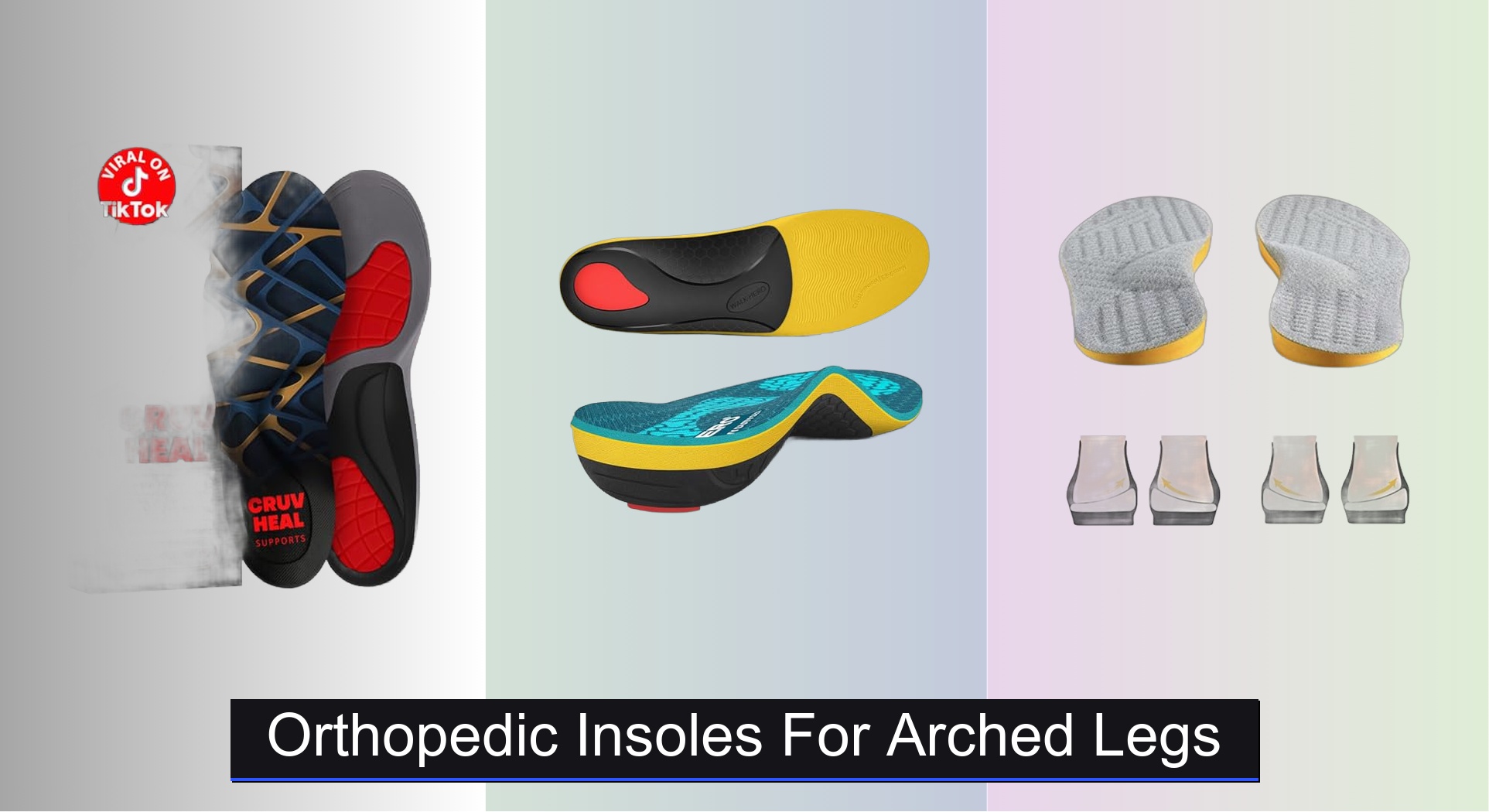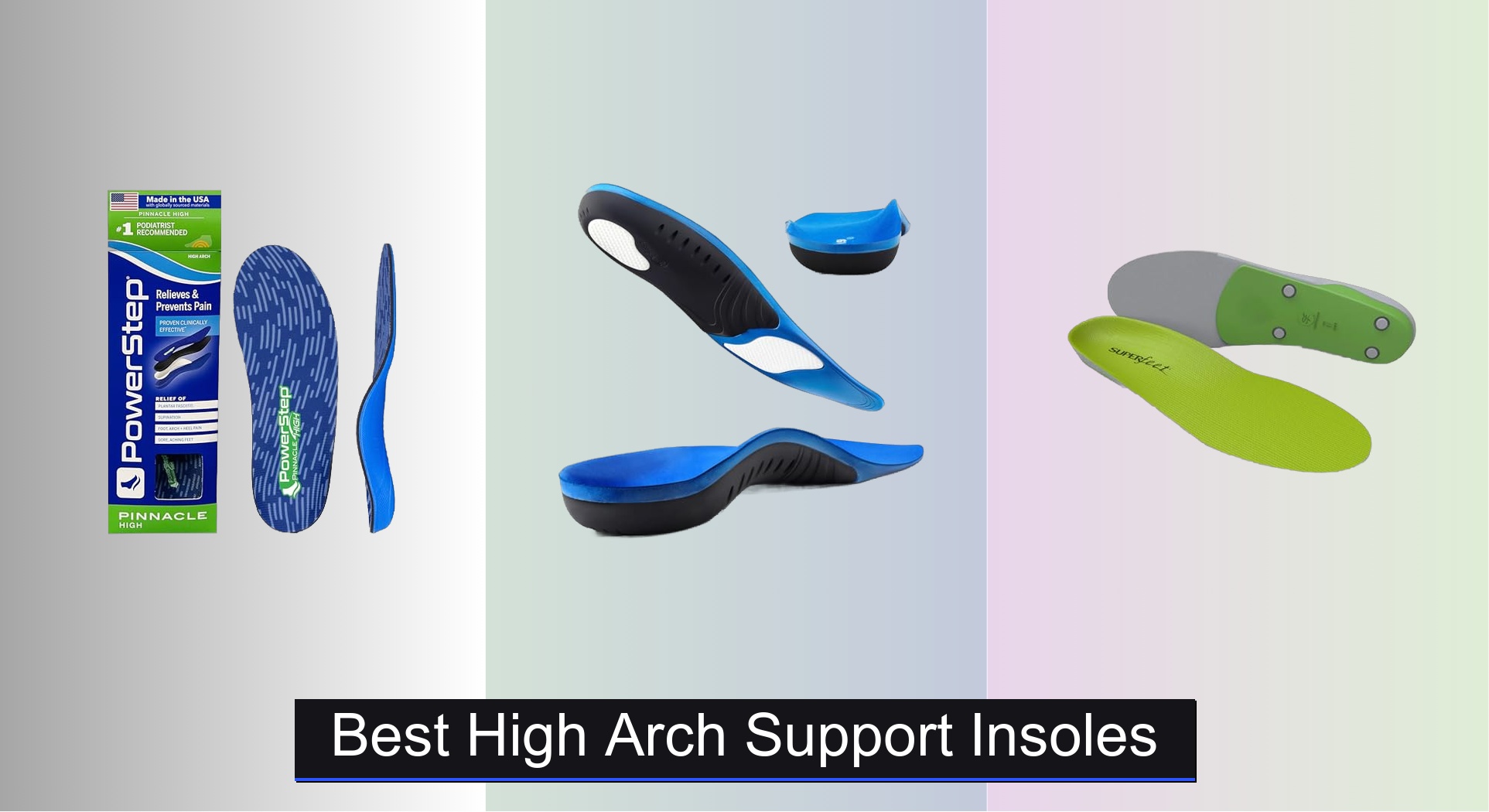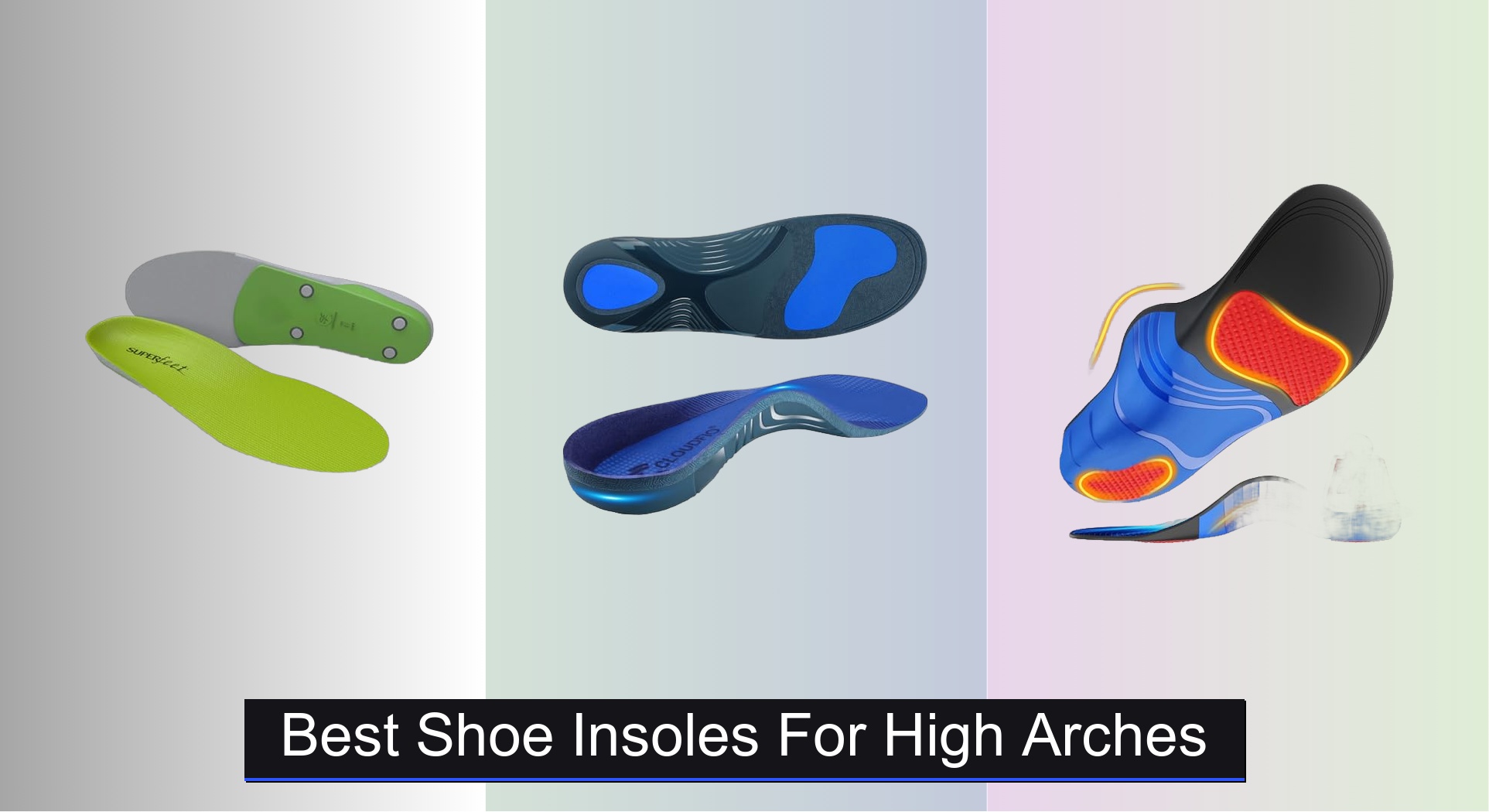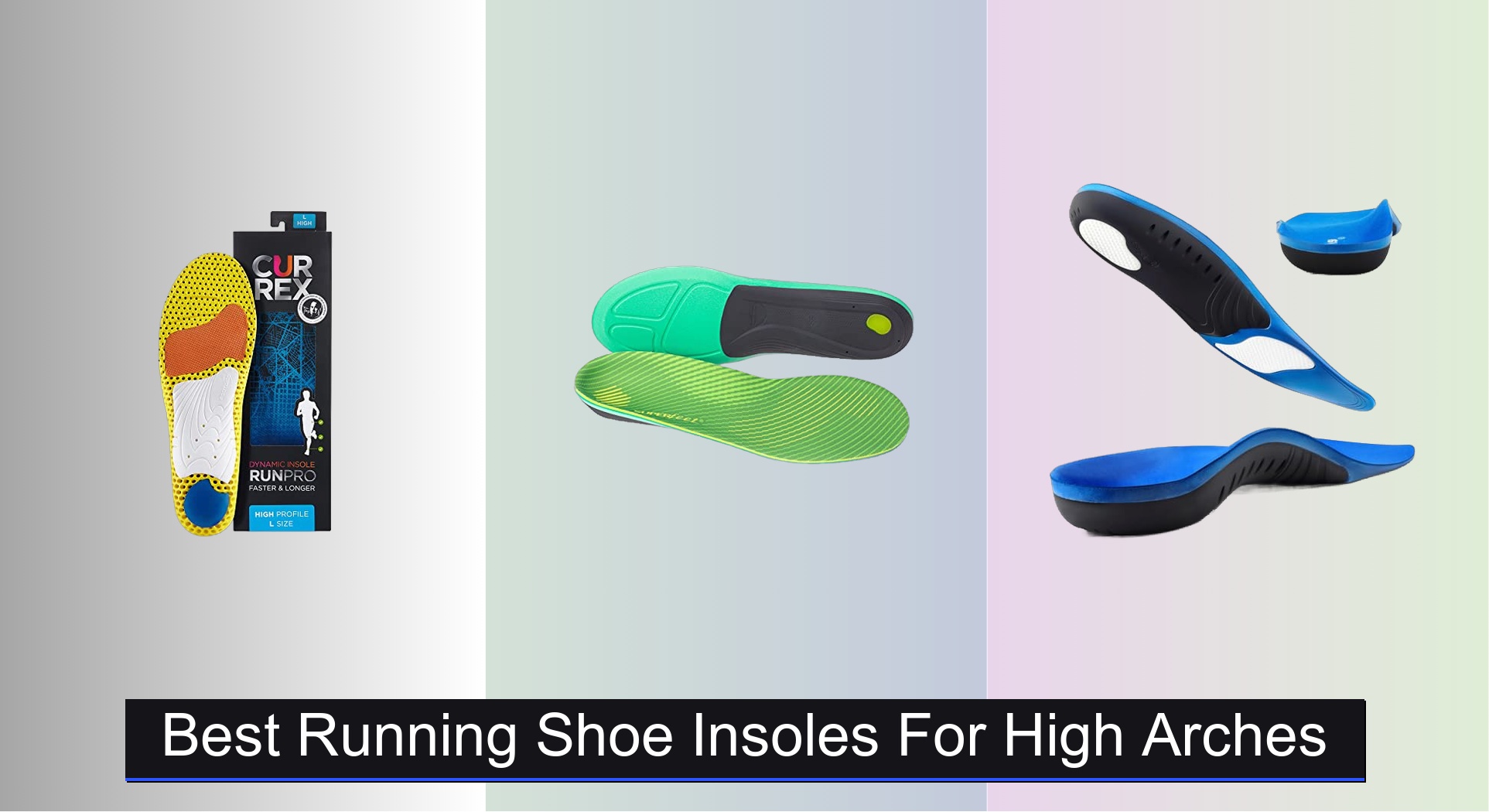Living with arched legs often means dealing with discomfort, instability, and misalignment that can ripple up the body, affecting knees, hips, and posture. Standard insoles rarely provide the targeted support needed, leading to fatigue, pain, and inefficient movement. The right orthopedic insoles can correct imbalances, improve gait, and deliver lasting relief by addressing the root cause of discomfort.
After analyzing biomechanical research, product specs, and hundreds of user reviews, we’ve identified the best orthopedic insoles for arched legs—prioritizing arch support precision, cushioning quality, adjustability, and durability. From rigid support to customizable correction, these top picks deliver proven performance. Keep reading to find the ideal fit for your needs and footwear.
Best Options at a Glance

Adjustable Heel Wedge Inserts Orthotics
Best Budget Friendly
- Supination/Overpronation
- 3 Layers
- 0.45″
- 0.2″
- L: W 7-11

BlingKingdom Soft Gel Arch Support Insoles
Best for Flat Feet
- 2 pairs
- Silicone
- High arch
- Self-adhesive
- Most shoe types
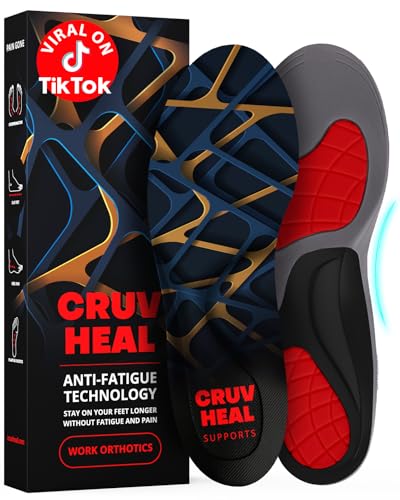
Work Orthotic Insoles Anti Fatigue Support
Best Overall
- Medium
- Anti-Fatigue
- Plantar Fasciitis
- Men / Women
- Orthotic

Goofort DynaZoom Arch Support Insoles
Best Shock Absorption
- High
- Air Cushioning
- Plantar Fasciitis
- Unisex
- Ergonomic Contour

ViveSole 3/4 Plantar Fasciitis Insoles
Best for Plantar Fasciitis
- Semi-rigid
- Deep
- 3/4
- EVA foam
- Plantar Fasciitis

Goofort Posture Correcting Orthotic Gel Insoles
Best for Posture & Alignment
- 4 in 1
- Flat & High
- Trim-to-Fit
- UK 2-12
- Gel (Pure PU)

Urwalk Adjustable Supination Over-Pronation Inserts
Best Adjustable Correction
- Foot alignment
- 3 layers
- 0.69″
- Anti-slip gel
- Medial/Lateral

WalkHero Heavy Duty Arch Support Insoles
Best for High Weight Support
- 220+ lbs
- Rigid
- EVA, OrthoLite, PU
- Full
- Men 6-6.5, Women 8-8.5
Orthopedic Insoles For Arched Legs Review
How to Choose the Right Orthopedic Insoles for Arched Legs
Choosing the right orthopedic insoles can make a significant difference in managing pain and improving comfort if you have arched legs. Here’s a breakdown of key features to consider:
Arch Support: The Foundation of Comfort
The level of arch support is arguably the most important factor. Arched legs often benefit from insoles designed to correct overpronation (inward rolling of the foot) or supination (outward rolling). High arch support is crucial for individuals with high arches, as it fills the gap and provides cushioning where the foot naturally curves. Moderate arch support is better for those with a more moderate arch, offering stability without excessive correction. Insoles with adjustable arch support, like the Urwalk Adjustable Supination Over-Pronation Inserts, allow you to customize the level of correction, offering versatility and a more tailored fit. Insufficient arch support can worsen pain, while too much can create new pressure points.
Cushioning & Shock Absorption: Reducing Impact
Cushioning works hand-in-hand with arch support. Insoles with good shock absorption, often utilizing materials like gel or EVA foam (as seen in the WalkHero Heavy Duty Arch Support Insoles and Goofort DynaZoom Arch Support Insoles), minimize the impact on your feet, ankles, and knees with each step. This is particularly important if you spend a lot of time on your feet or engage in high-impact activities. Different materials offer varying levels of cushioning; gel tends to be softer, while foam provides a more resilient feel. Consider the Goofort Posture Correcting Orthotic Gel Insoles for a focus on comfort and posture.
Material & Durability: Long-Term Support
The materials used in an insole impact its durability and overall comfort. EVA foam is common and affordable, but may compress over time. PU (polyurethane) is more durable and provides better support, but is often more expensive. Gel materials offer cushioning but may not be as supportive on their own. Look for insoles made from a combination of materials for the best of both worlds. The Work Orthotic Insoles Anti Fatigue Support feature a combination of cushioning layers for enhanced stamina, highlighting the benefit of multi-material construction.
Fit & Compatibility: A Seamless Experience
Insoles should fit comfortably within your shoes without bunching or causing friction. Many insoles, like the Goofort Posture Correcting Orthotic Gel Insoles and BlingKingdom Soft Gel Arch Support Insoles, are trimmable to fit various shoe sizes. Consider the type of shoes you’ll be using the insoles with – some are designed for work boots, while others are better suited for sneakers or dress shoes. 3/4 length insoles, such as the ViveSole 3/4 Plantar Fasciitis Insoles, can be useful if you need more room in the toe box.
Additional features to consider:
- Heel Cup: Provides stability and helps align the heel.
- Top Cover Material: Moisture-wicking fabrics can improve comfort.
- Adjustability: Allows customization for optimal support.
- Corrective Wedges: Useful for addressing specific alignment issues (supination/pronation).
Orthopedic Insoles for Arched Legs Comparison
| Product | Best For | Arch Support | Shock Absorption | Adjustability | Key Features |
|---|---|---|---|---|---|
| Work Orthotic Insoles Anti Fatigue Support | Best Overall | Supports longitudinal & transverse arches | Cushioning layer & shock-absorbing pads | Size selection | Anti-fatigue, fatigue reduction design, foot pain prevention |
| WalkHero Heavy Duty Arch Support Insoles | Best for High Weight Support | Rigid arch support (nylon sheet) | EVA foam & OrthoLite layers, PU heel cushioning | None | Heavy duty pain relief, strong arch support, comfortable cushioning |
| Goofort Posture Correcting Orthotic Gel Insoles | Best for Posture & Alignment | Corrects X/O Valgus Varus misalignment | Gel material | Trimmable | Posture correction, plantar fasciitis relief, flat/high arch support |
| Urwalk Adjustable Supination Over-Pronation Inserts | Best Adjustable Correction | Medial & lateral heel wedge | Anti-slip gel & sweat absorbent fabric | 3 adjustable layers | Corrects knock knees, bowlegged-ness, pronation, supination |
| Adjustable Heel Wedge Inserts Orthotics | Best Budget Friendly | Adjustable heel wedge | Cupped heel support | Adjustable layers (0.2″ & 0.45″) | Corrects bow legs, knock knees, pronation, osteoarthritis |
| ViveSole 3/4 Plantar Fasciitis Insoles | Best for Plantar Fasciitis | Semi-rigid arch support & deep heel cup | EVA padding | Trimmable | Podiatrist designed, plantar fasciitis relief, fits various shoes |
| Goofort DynaZoom Arch Support Insoles | Best Shock Absorption | Contoured arch support | Air cushioning technology | None | Air cushioning, plantar fasciitis relief, ergonomic design |
| BlingKingdom Soft Gel Arch Support Insoles | Best for Flat Feet | High arch design | Gel material | None | Supports flat feet, relieves arch pressure, self-adhesive |
Testing & Data Analysis: Finding the Best Orthopedic Insoles for Arched Legs
Our recommendations for orthopedic insoles for arched legs aren’t based on subjective impressions; they’re driven by data analysis and a research-backed methodology. We prioritize studies on biomechanics, podiatry, and gait analysis to understand the impact of insoles on foot function and pain reduction.
We analyze product specifications – focusing on arch height, material composition (EVA, PU, gel), cushioning properties, and heel cup design – comparing them against established ergonomic principles. We evaluate customer reviews across multiple platforms (Amazon, specialized retailers) using sentiment analysis to identify recurring themes regarding comfort, durability, and effectiveness for individuals with high arches.
While direct physical testing of orthopedic insoles is limited due to individual foot variations, we assess claims of pronation/supination correction against biomechanical research. We also consider independent lab testing data where available, specifically regarding shock absorption and material resilience. Comparative analyses are performed, benchmarking insole features against the key criteria outlined in our buying guide – arch support level, cushioning, material quality, and fit – to pinpoint the options offering the optimal balance of support and comfort for users with arched legs. We continuously update our findings based on new research and product releases within the footwear and orthotics space.
FAQs
What are orthopedic insoles and how can they help arched legs?
Orthopedic insoles are supportive inserts placed inside shoes to correct foot imbalances and improve comfort. For arched legs, they provide crucial arch support, cushioning, and can help address issues like overpronation or supination, reducing pain and fatigue.
How do I know which arch support level is right for me?
The ideal arch support level depends on the height of your arch. High arch support is best for high arches, filling the gap and providing cushioning. Moderate arch support is suitable for moderate arches, offering stability without excessive correction. Adjustable insoles allow for customization.
What materials should I look for in orthopedic insoles?
Look for a combination of materials. EVA foam is affordable but may compress over time. PU (polyurethane) is more durable. Gel offers cushioning. Combining materials, like in the Work Orthotic Insoles, provides the best balance of support, cushioning, and durability for orthopedic insoles.
Are these insoles suitable for all types of shoes?
Not all insoles are universally compatible. Consider the shoe type – some are designed for work boots, others for sneakers. Many insoles, like the Goofort Posture Correcting Orthotic Gel Insoles, are trimmable to fit. 3/4 length insoles are useful if you need extra toe box space.
The Bottom Line
Choosing the right orthopedic insoles for arched legs requires careful consideration of arch support, cushioning, material, and fit. By understanding your individual needs and the features available, you can significantly improve comfort and alleviate pain associated with your foot structure.
Investing in quality insoles is an investment in your overall well-being, promoting better posture and reducing strain on your feet, ankles, and knees. Don’t hesitate to explore adjustable options and consult with a podiatrist for personalized recommendations to find the perfect fit for lasting relief.






